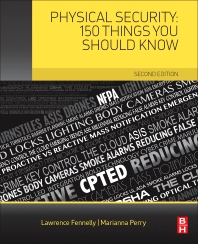1. Cross Zoning means programming two or more wireless sensors with the same ID number.
a. True
b. False
2. A mesh network combines the technologies of multiple manufacturers so that the chances of signal transmission success are increased.
a. True
b. False
3. Add-on devices to a wireless security system by their nature cannot be supervised.
a. True
b. False
4. Wavelength _____________ as the frequency _____________________.
a. increases / decreases
b. increases / increases
c. decreases / decreases
d. decreases / increases
5. Which of the following construction materials will interfere with the transmission of wireless signals?
a. Wood paneling
b. Sheetrock
c. Mirrors
d. All of the above
6. “Line of sight” means the total distance you can see is the range of the wireless detector.
a. True
b. False
7. Mesh systems utilize a series of towers to receive and retransmit their signals.
a. True
b. False
8. Wireless devices may be used only indoors.
a. True
b. False
9. All burglar alarm control panels are capable of supervised wireless signaling.
a. True
b. False
10. Wireless transmitters include all of the following except
a. motion detectors.
b. smoke detectors.
c. glass-breakage detectors.
d. door/window contacts.
e. sirens.
11. Mesh networks are only approved for burglar alarm signals and not approved by NFPA 72 for transmitting commercial fire alarm signals.
a. True
b. False
12. The higher the voltage of a battery in the transmitter, the longer the transmitter will function properly.
a. True
b. False
13. Wireless systems may be used on commercial burglar and fire alarm systems if
a. listed by UL 681.
b. specified by the AHJ.
c. listed for the purposes for which it is intended.
d. the manufacturer says so.
e. only for residential systems.
14. Which of the following frequencies is not used for wireless security systems?
a. 300 MHz
b. 450 MHz
c. 900 MHz
d. 2.9 GHz
15. Supervised wireless devices means which of the following is monitored?
a. the battery
b. device status (door, window)
c. tamper or cover on the transmitter
d. All of the above
e. only whether or not the protection device is operational

|
What’s Wrong With This?
Hapless Harry installed a wireless alarm system in a commercial building, but he had trouble with some of the sensors. Can you determine what the resolution to the problem would be?

|
Answer to: What’s Wrong With This?
Harry needed to move the control panel and receiver more towards the center of the building. This also cleared the way for the signal to be received from the outside storage shed he was protecting. The mechanical room was originally in the way with a number of electronic components and large metal air conditioning ducts. Because he had to run a phone line from the lobby to the phone room, by moving the panel to the phone room, he was able to use that wire for the remote keypad. The panel also then became better protected, instead of being in the lobby and easy to tamper with.
5-Minute Tech Quiz Answers
Here are the answers to 5-Minute Tech Quiz.
1. b
2. b
3. b
4. d
5. c — Mirrors have a silver backing which can hinder the signal from the transmitter.
6. b
7. b — Mesh systems transmit their signals from unit to unit and not through conventional radio or cellular towers.
8. b — When properly listed, they may be used outdoors.
9. b — Not every burglar alarm panel is manufactured to permit supervised wireless. Some are designed to accept supervised wireless, while others can accept add-on devices.
10. e — A siren may be wireless but it would receive a signal, not transmit one.
11. b — If the device is submitted for testing to a nationally recognized testing laboratory and receives the appropriate listing it may be used for that purpose.
12. b — The voltage would not determine how long a device may operate. Many factors, including usage, affect the life of the battery. Increasing the amperage of a battery would add more operating time.
13. c
14. d
15. d










